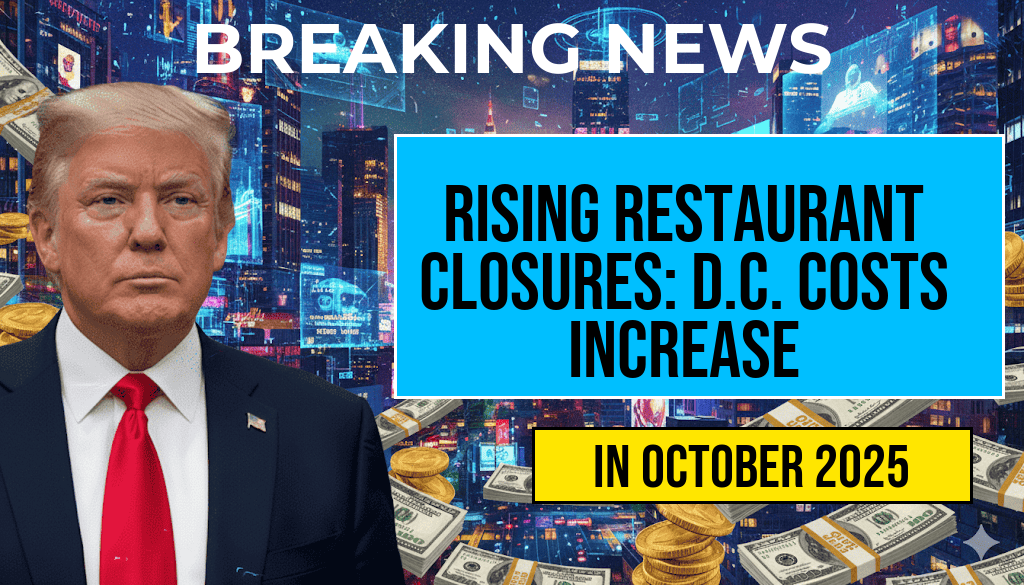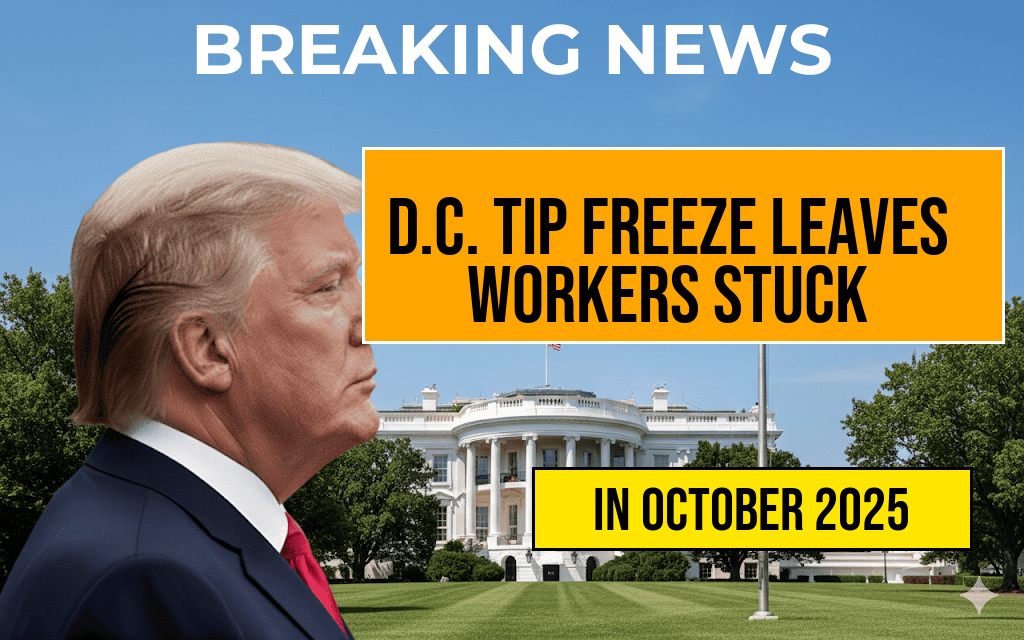As the restaurant industry continues to grapple with the effects of rising operational costs, a prominent venue in Washington, D.C. has reported an annual burden of $60,000 stemming from wage regulations. This situation raises significant concerns about the sustainability of dining establishments in the area and what this could mean for consumers. While the intention behind such regulations is to improve worker compensation, the financial strain on restaurants could lead to increased prices on menus, potentially altering the dining landscape in the nation’s capital. With many establishments already feeling the pressure, the question remains: how will these rising costs affect the future of dining out in D.C.?
Understanding the Financial Impact of Wage Regulations
The restaurant in question, which has chosen to remain anonymous for competitive reasons, has provided insight into how wage regulations are impacting its bottom line. The reported $60,000 annual cost primarily stems from mandated increases in minimum wage and additional benefits required under local laws. These expenses are not isolated; many restaurants across the D.C. area are facing similar challenges.
Current Wage Regulations in D.C.
- The minimum wage in Washington, D.C. is currently set at $16.10 per hour.
- Employers are required to pay an additional $4.40 per hour if they do not provide health benefits.
- These regulations are part of a broader initiative to ensure fair wages and improve living standards for service workers.
As a result, restaurant owners are faced with difficult decisions regarding staffing, pricing, and sometimes, even closure. The ongoing adjustments to wages have pushed many to reevaluate their business models, especially as they try to balance quality service with financial viability.
Potential Consequences for Consumers
The immediate consequence of rising operational costs is the likelihood of increased menu prices. Restaurant owners are often forced to pass on these expenses to consumers, leading to higher bills for diners. This adjustment can affect consumer behavior, especially in a city like Washington, D.C., where dining out is a popular social activity.
Price Increases: A Necessary Evil?
Many establishments are weighing their options. Some may consider reducing staff hours or limiting menu offerings to maintain profitability without sacrificing service quality. Others might implement seasonal pricing or introduce surcharges for high-demand times, such as holidays or weekends. The impact of these strategies could be significant, changing the dining experience for many customers.
Industry Responses and Future Outlook
In response to these challenges, some restaurants are banding together to advocate for policies that consider the realities of operating a business in a high-cost environment. The D.C. Restaurant Association has been vocal about the need for a balanced approach to wage legislation that considers both worker welfare and business sustainability.
Advocacy and Support Measures
- Lobbying for adjustments in wage regulations based on the economic climate.
- Promoting programs that support small businesses, such as tax breaks or grants.
- Encouraging diners to support local restaurants through community initiatives.
As the city evolves, the restaurant landscape may need to adapt further. Diners might find themselves supporting restaurants that prioritize ethical practices while also ensuring financial stability. This shift can lead to a more resilient dining scene, albeit with its own set of challenges.
Conclusion: A Transformative Period for D.C. Restaurants
The rising costs associated with wage regulations are reshaping the dining experience in Washington, D.C. As venues report significant financial burdens, the potential for rising menu prices looms larger. Whether consumers will adapt to these changes or seek dining alternatives remains to be seen. Ultimately, the balance between fair wages for workers and the viability of restaurants is crucial for the future of the culinary landscape in the capital. For more information on wage regulations and the restaurant industry’s response, visit Wikipedia or read insights from Forbes.
Frequently Asked Questions
What are the main factors contributing to restaurant closures in D.C.?
The rising number of restaurant closures in D.C. can be attributed to several factors, including increased operational costs from wage regulations, inflation, and a competitive market. Many venues are struggling to maintain profitability amidst these challenges.
How much is the annual cost of wage regulations for restaurants in D.C.?
One D.C. venue has reported an annual cost of $60,000 due to wage regulations. This financial burden is forcing many restaurants to reevaluate their pricing strategies and overall business models.
What impact do rising costs have on menu prices?
As restaurants face higher operational costs, including those from wage regulations, many are likely to increase menu prices to maintain profitability. Customers may see these changes in their bills as restaurants adjust to the economic climate.
Are there any potential solutions for struggling restaurants?
To combat rising costs, restaurants may explore several solutions, such as streamlining operations, adjusting menu offerings, or seeking community support. Additionally, some may advocate for changes in wage legislation to ease financial pressures.
What does the future hold for the restaurant industry in D.C.?
The future of the restaurant industry in D.C. may involve ongoing adjustments to pricing, menu offerings, and operational strategies. As the economic landscape evolves, restaurants will need to innovate to survive and thrive in a challenging environment.






